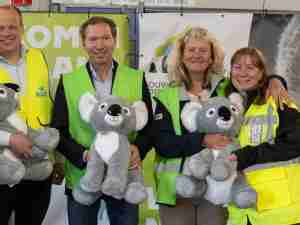HNA Taints a Good Aviation Business by Buying Airlines
By: | May 31 2016 at 03:19 AM | Air Cargo
HNA Group has a great strategy for making money from the aviation industry. So why does it have to spoil it all by buying airlines?
The owner of Hainan Airlines, which has been buying businesses the way Carrie Bradshaw buys shoes, has spotted a couple more must-haves to stick in its $22 billion closet. HNA is putting down A$159 million ($114 million) for a 13 percent stake in Virgin Australia, the Australian carrier said Tuesday. It’s also in talks to buy half of Air France’s Servair inflight catering business, a stake with an enterprise value of 238 million euros ($265 million), according to the French company.
Let’s set aside for a moment the fascinating mystery of how the Chinese conglomerate intends to pay a Kraft Heinz-sized debt pile with its Lindt-sized operating income. The question then becomes, is HNA spending its magic pot of gold on good companies, or bad ones?
There’s commercial logic to both deals. HNA, based on Hainan Island, agreed to buy Swissair’s former catering unit Gategroup last month. Taking control of Servair as well would give it one of the world’s biggest airline catering businesses, with 200 bases and 300 airline customers, according to Air France-KLM.
The Virgin Australia stake will come with a strategic alliance allowing HNA’s carrier units—including main business Hainan Air— to co-ordinate code-share flights and frequent-flier programs. That will turn Australia into a potential new revenue stream for Hainan Air’s leisure-focused passengers and help develop its Haikou base into more of an international hub.
What about the financial logic?
As a fully owned subsidiary of Air France-KLM, Servair is a bit of a black box. But there are some clues: Aviation services businesses such as caterers, maintenance engineers and baggage handlers tend to be more profitable than airlines themselves, according to a 2013 report by IATA, with an average return on capital of 11 percent compared with 4 percent for carriers.
Aviation service businesses average return on capital: 11%
Assume Servair’s Ebitda margins are comparable with those of its two big European rivals: Gategroup, which HNA agreed to buy for 1.4 billion Swiss francs ($1.4 billion) last month, and Lufthansa’s wholly owned catering arm, LSG. Gategroup’s margin averaged 4.7 percent over the past three years and LSG’s came to 7.8 percent, according to data compiled by Bloomberg.
With Servair’s turnover sitting at 792 million euros in 2015, that suggests HNA could be getting the business for between 7.7 and 12.8 times trailing 12-month Ebitda — in line with the 12 times multiple it paid for Gategroup. Doing the same exercise on Virgin Australia suggests a more generous valuation. The price HNA is paying—without the control that it’s getting from Servair—suggests an enterprise value of about 9 times its A$392 million in Ebitda for the 12 months through December, well above the 4.8 times multiple for the Bloomberg World Airlines Index.
That’s probably the wrong direction to be going for HNA. Airlines already account for about 21 percent of the group’s operating income, according to financial data attached to the 2 billion yuan ($309 million) of 7 percent bonds the company sold last month. Airlines’ notoriously volatile cash flows, which can turn from negative to positive on a shift in the oil price or swing in currency markets, are the last thing that’s wanted when building a business on a pile of debt.
Warren Buffett, something of a guru for acquisitive Chinese businesses such as HNA, swore off investing in airlines after almost getting cleaned out in U.S. Air during the 1990s. The sector is a “bottomless pit’’ that sucks up capital and produces meager profits in return, he told shareholders in his 2007 investor letter:
A durable competitive advantage has proven elusive ever since the days of the Wright Brothers. Indeed, if a farsighted capitalist had been present at Kitty Hawk, he would have done his successors a huge favor by shooting Orville down.
That sounds like bad news, but maybe airlines and HNA are made for each other. If you’re going to pour money into a bottomless pit, it’s probably best to have access to a bottomless credit limit too.
This column does not necessarily reflect the opinion of Bloomberg LP and its owners.









